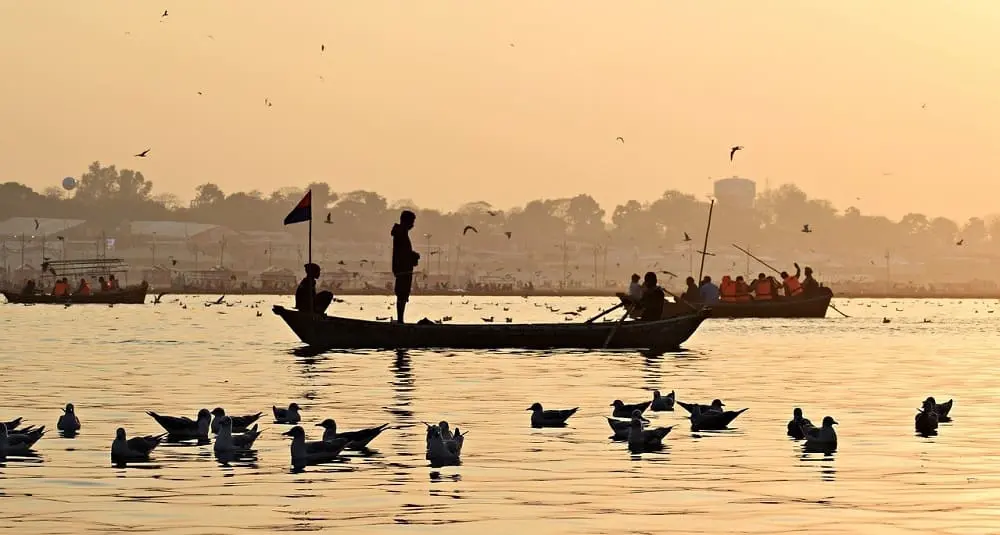Where does the River Ganges flow?
Last Updated:
The Ganges, India’s most emblematic river, rises in the western Himalayas, in the Indian state of Uttarakhand. After a journey of some 2,700 kilometers through northern India and Bangladesh, it empties into the Bay of Bengal, forming with the Brahmaputra River the Ganges-Brahmaputra delta, considered the largest delta in the world.
The Ganges has its source in the Gangotri glacier, at an altitude of around 4,100 meters, under the name Bhagirathi. It officially becomes the Ganges after its confluence with the Alaknanda at Devaprayag. The river then flows through major cities such as Haridwar, Varanasi and Patna, playing a crucial role in the region’s culture, religion and economy.
As it nears its end, the Ganges enters Bangladesh, where it is called Padma. It meets the Brahmaputra, known locally as the Jamuna, near the town of Goalundo Ghat. This confluence gives rise to a complex river system that divides into multiple canals before emptying into the Bay of Bengal.
The delta formed by the Ganges and Brahmaputra rivers is the world’s largest delta, covering an area of around 100,000 square kilometers. This region, known as the Sundarbans, is renowned for its exceptional biodiversity, home to the world’s largest mangrove swamp and iconic species such as the Bengal tiger.
The Ganges-Brahmaputra delta plays a vital role for the local population. It offers fertile land suitable for agriculture, particularly rice and jute. The many rivers and canals facilitate fishing, essential to the region’s food supply and economy. However, the region is also vulnerable to floods, cyclones and rising sea levels, posing major problems for the communities who live there.
The Ganges is revered as a sacred river in Hinduism. Believers believe that bathing in its waters purifies the soul and frees one from sin. Cities such as Varanasi are major pilgrimage centers, where millions of devotees come every year to perform religious rituals, including cremations on the ghats, the steps leading down to the river.
Despite its importance, the Ganges faces major environmental challenges. Pollution from industrial discharges, domestic sewage and religious practices is endangering water quality and biodiversity. Government initiatives, such as the Namami Gange program, aim to clean up the river and restore its ecosystem, but progress is slow and requires constant mobilization.
The Ganges, which flows into the Bay of Bengal and forms the Ganges-Brahmaputra delta, illustrates its central role in the geography, ecology and culture of South Asia. Its preservation is essential not only for the ecosystems it supports, but also for the millions of people who depend on its sacred and fertile waters.
You may also be interested in
geography

Where does the River Ganges flow?
Answer
The Ganges flows into the Bay of Bengal, forming with the Brahmaputra the Ganges-Brahmaputra delta, the largest delta in the world.